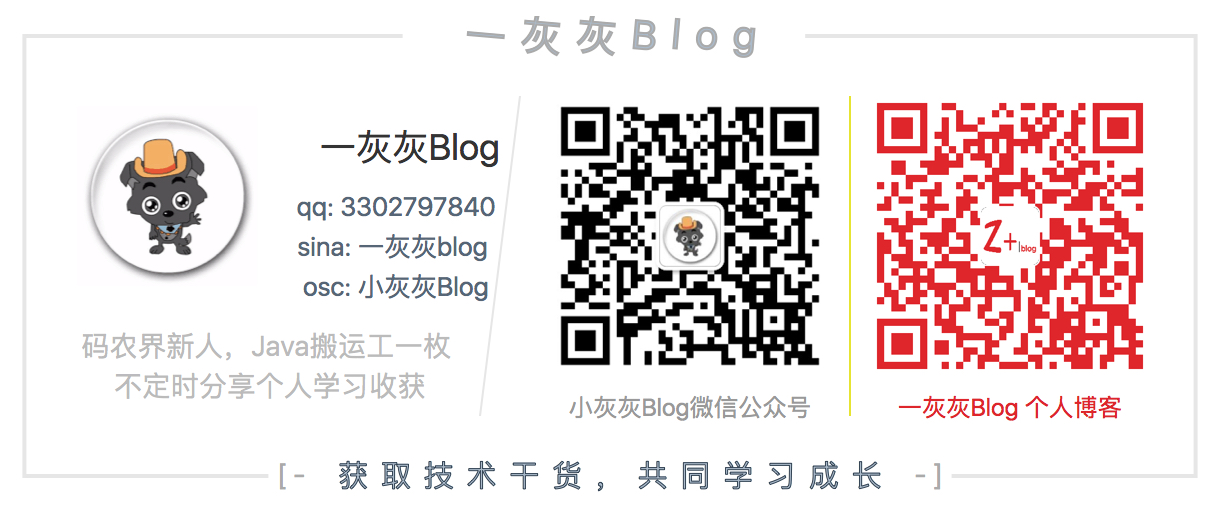Spring之RedisTemplate配置与使用 Spring针对Redis的使用,封装了一个比较强大的Template以方便使用;之前在Spring的生态圈中也使用过redis,但直接使用Jedis进行相应的交互操作,现在正好来看一下RedisTemplate是怎么实现的,以及使用起来是否更加便利
I. 基本配置 1. 依赖 依然是采用Jedis进行连接池管理,因此除了引入 spring-data-redis之外,再加上jedis依赖,pom文件中添加
1 2 3 4 5 6 7 8 9 10 11 <dependency > <groupId > org.springframework.data</groupId > <artifactId > spring-data-redis</artifactId > <version > 1.8.4.RELEASE</version > </dependency > <dependency > <groupId > redis.clients</groupId > <artifactId > jedis</artifactId > <version > 2.9.0</version > </dependency >
如果需要指定序列化相关参数,也可以引入jackson,本篇为简单入门级,就不加这个了
2. 配置文件 准备redis相关的配置参数,常见的有host, port, password, timeout…,下面是一份简单的配置,并给出了相应的含义
1 2 3 4 5 6 7 8 9 10 11 12 13 14 15 16 17 18 19 20 21 22 redis.hostName=127.0.0.1 redis.port=6379 redis.password=https://blog.hhui.top # 连接超时时间 redis.timeout=10000 #最大空闲数 redis.maxIdle=300 #控制一个pool可分配多少个jedis实例,用来替换上面的redis.maxActive,如果是jedis 2.4以后用该属性 redis.maxTotal=1000 #最大建立连接等待时间。如果超过此时间将接到异常。设为-1表示无限制。 redis.maxWaitMillis=1000 #连接的最小空闲时间 默认1800000毫秒(30分钟) redis.minEvictableIdleTimeMillis=300000 #每次释放连接的最大数目,默认3 redis.numTestsPerEvictionRun=1024 #逐出扫描的时间间隔(毫秒) 如果为负数,则不运行逐出线程, 默认-1 redis.timeBetweenEvictionRunsMillis=30000 #是否在从池中取出连接前进行检验,如果检验失败,则从池中去除连接并尝试取出另一个 redis.testOnBorrow=true #在空闲时检查有效性, 默认false redis.testWhileIdle=true
说明
redis密码请一定记得设置,特别是在允许远程访问的时候,如果没有密码,默认端口号,很容易就被是扫描注入脚本,然后开始给人挖矿(亲身经历…)
II. 使用与测试 根据一般的思路,首先是得加载上面的配置,创建redis连接池,然后再实例化RedisTemplate对象,最后持有这个实力开始各种读写操作
1. 配置类 使用JavaConfig的方式来配置,主要是两个Bean,读取配置文件设置各种参数的RedisConnectionFactory以及预期的RedisTemplate
1 2 3 4 5 6 7 8 9 10 11 12 13 14 15 16 17 18 19 20 21 22 23 24 25 26 27 28 29 30 31 32 33 34 35 @Configuration @PropertySource ("classpath:redis.properties" )public class RedisConfig extends JCacheConfigurerSupport @Autowired private Environment environment; @Bean public RedisConnectionFactory redisConnectionFactory () JedisConnectionFactory fac = new JedisConnectionFactory(); fac.setHostName(environment.getProperty("redis.hostName" )); fac.setPort(Integer.parseInt(environment.getProperty("redis.port" ))); fac.setPassword(environment.getProperty("redis.password" )); fac.setTimeout(Integer.parseInt(environment.getProperty("redis.timeout" ))); fac.getPoolConfig().setMaxIdle(Integer.parseInt(environment.getProperty("redis.maxIdle" ))); fac.getPoolConfig().setMaxTotal(Integer.parseInt(environment.getProperty("redis.maxTotal" ))); fac.getPoolConfig().setMaxWaitMillis(Integer.parseInt(environment.getProperty("redis.maxWaitMillis" ))); fac.getPoolConfig().setMinEvictableIdleTimeMillis( Integer.parseInt(environment.getProperty("redis.minEvictableIdleTimeMillis" ))); fac.getPoolConfig() .setNumTestsPerEvictionRun(Integer.parseInt(environment.getProperty("redis.numTestsPerEvictionRun" ))); fac.getPoolConfig().setTimeBetweenEvictionRunsMillis( Integer.parseInt(environment.getProperty("redis.timeBetweenEvictionRunsMillis" ))); fac.getPoolConfig().setTestOnBorrow(Boolean.parseBoolean(environment.getProperty("redis.testOnBorrow" ))); fac.getPoolConfig().setTestWhileIdle(Boolean.parseBoolean(environment.getProperty("redis.testWhileIdle" ))); return fac; } @Bean public RedisTemplate<String, String> redisTemplate (RedisConnectionFactory redisConnectionFactory) RedisTemplate<String, String> redis = new RedisTemplate<>(); redis.setConnectionFactory(redisConnectionFactory); redis.afterPropertiesSet(); return redis; } }
2. 测试与使用 1 2 3 4 5 6 7 8 9 10 11 12 13 14 15 16 17 18 19 @RunWith (SpringJUnit4ClassRunner.class ) @ContextConfiguration (classes = {RedisConfig.class }) public class RedisTest @Autowired private RedisTemplate<String, String> redisTemplate; @Test public void testRedisObj () Map<String, Object> properties = new HashMap<>(); properties.put("123" , "hello" ); properties.put("abc" , 456 ); redisTemplate.opsForHash().putAll("hash" , properties); Map<Object, Object> ans = redisTemplate.opsForHash().entries("hash" ); System.out.println("ans: " + ans); } }
执行后输出如下
1 ans: {123=hello, abc=456}
从上面的配置与实现来看,是很简单的了,基本上没有绕什么圈子,但是使用redis-cli连上去,却查询不到 hash 这个key的内容
1 2 3 4 127.0.0.1:6379> get hash (nil) 127.0.0.1:6379> keys * 1) "\xac\xed\x00\x05t\x00\x04hash"
使用代码去查没问题,直接控制台连接,发现这个key和我们预期的不一样,多了一些前缀,why ?
3. 序列化问题 为了解决上面的问题,只能debug进去,看下是什么引起的了
对应源码位置:
1 2 3 4 5 6 byte [] rawKey(Object key) { Assert.notNull(key, "non null key required" ); return this .keySerializer() == null && key instanceof byte [] ? (byte [])((byte [])key) : this .keySerializer().serialize(key); }
可以看到这个key不是我们预期的 key.getBytes(), 而是调用了this.keySerializer().serialize(key),而debug的结果,默认Serializer是JdkSerializationRedisSerializer
然后就是顺藤摸瓜一步一步深入进去,链路如下
1 2 3 4 5 6 7 8 9 10 11 12 13 14 15 16 17 18 // org.springframework.core.serializer.support.SerializingConverter // org.springframework.core.serializer.DefaultSerializer public class DefaultSerializer implements Serializer<Object> { public DefaultSerializer } public void serialize(Object object, OutputStream outputStream) throws IOException { if (!(object instanceof Serializable)) { throw new IllegalArgumentException(this.getClass().getSimpleName() + " requires a Serializable payload but received an object of type [" + object.getClass().getName() + "]" ); } else { ObjectOutputStream objectOutputStream = new ObjectOutputStream(outputStream); objectOutputStream.writeObject(object); objectOutputStream.flush(); } } }
所以具体的实现很清晰了,就是 ObjectOutputStream,这个东西就是Java中最原始的序列化反序列流工具,会包含类型信息,所以会带上那串前缀了
所以要解决这个问题,也比较明确了,替换掉原生的JdkSerializationRedisSerializer,改为String的方式,正好提供了一个StringRedisSerializer,所以在RedisTemplate的配置处,稍稍修改
1 2 3 4 5 6 7 8 9 10 11 12 13 14 15 @Bean public RedisTemplate<String, String> redisTemplate (RedisConnectionFactory redisConnectionFactory) RedisTemplate<String, String> redis = new RedisTemplate<>(); redis.setConnectionFactory(redisConnectionFactory); StringRedisSerializer stringRedisSerializer = new StringRedisSerializer(); redis.setKeySerializer(stringRedisSerializer); redis.setValueSerializer(stringRedisSerializer); redis.setHashKeySerializer(stringRedisSerializer); redis.setHashValueSerializer(stringRedisSerializer); redis.afterPropertiesSet(); return redis; }
再次执行,结果尴尬的事情出现了,抛异常了,类型转换失败
1 2 3 4 5 6 java.lang.ClassCastException: java.lang.Integer cannot be cast to java.lang.String at org.springframework.data.redis.serializer.StringRedisSerializer.serialize(StringRedisSerializer.java:33) at org.springframework.data.redis.core.AbstractOperations.rawHashValue(AbstractOperations.java:171) at org.springframework.data.redis.core.DefaultHashOperations.putAll(DefaultHashOperations.java:129) ...
看前面的测试用例,map中的value有integer,而StringRedisSerializer接收的参数必须是String,所以不用这个,自己照样子重新写一个兼容掉
1 2 3 4 5 6 7 8 9 10 11 12 13 14 15 16 17 18 19 20 21 22 23 24 public class DefaultStrSerializer implements RedisSerializer <Object > private final Charset charset; public DefaultStrSerializer () this (Charset.forName("UTF8" )); } public DefaultStrSerializer (Charset charset) Assert.notNull(charset, "Charset must not be null!" ); this .charset = charset; } @Override public byte [] serialize(Object o) throws SerializationException { return o == null ? null : String.valueOf(o).getBytes(charset); } @Override public Object deserialize (byte [] bytes) throws SerializationException return bytes == null ? null : new String(bytes, charset); } }
然后可以开始愉快的玩耍了,执行完之后测试
1 2 3 4 5 6 7 8 keys * 1) "\xac\xed\x00\x05t\x00\x04hash" 2) "hash" 127.0.0.1:6379> hgetAll hash 1) "123" 2) "hello" 3) "abc" 4) "456"
III. RedisTemplate使用姿势 1. opsForXXX 简单过来一下RedisTemplate的使用姿势,针对不同的数据结构(String, List, ZSet, Hash)读封装了比较使用的调用方式 opsForXXX
1 2 3 4 5 6 7 8 9 10 11 12 13 14 org.springframework.data.redis.core.RedisTemplate#opsForHash org.springframework.data.redis.core.RedisTemplate#opsForList org.springframework.data.redis.core.RedisTemplate#opsForValue org.springframework.data.redis.core.RedisTemplate#opsForSet org.springframework.data.redis.core.RedisTemplate#opsForZSet
2. execute 除了上面的这种使用方式之外,另外一种常见的就是直接使用execute了,一个简单的case如下
1 2 3 4 5 6 7 8 9 10 11 12 13 14 15 16 17 18 19 20 21 22 23 24 @Test public void testRedis () String key = "hello" ; String value = "world" ; redisTemplate.execute((RedisCallback<Void>) con -> { con.set(key.getBytes(), value.getBytes()); return null ; }); String asn = redisTemplate.execute((RedisCallback<String>) con -> new String(con.get(key.getBytes()))); System.out.println(asn); String hkey = "hKey" ; redisTemplate.execute((RedisCallback<Void>) con -> { con.hSet(hkey.getBytes(), "23" .getBytes(), "what" .getBytes()); return null ; }); Map<byte [], byte []> map = redisTemplate.execute((RedisCallback<Map<byte [], byte []>>) con -> con.hGetAll(hkey.getBytes())); for (Map.Entry<byte [], byte []> entry : map.entrySet()) { System.out.println("key: " + new String(entry.getKey()) + " | value: " + new String(entry.getValue())); } }
输出结果如下
1 2 world key: 23 | value: what
3. 区别 一个自然而然能想到的问题就是上面的两种方式有什么区别?
opsForXXX 的底层,就是通过调用execute方式来做的,其主要就是封装了一些使用姿势,定义了序列化,使用起来更加的简单和便捷;
IV. 其他 0. 项目
一灰灰的个人博客,记录所有学习和工作中的博文,欢迎大家前去逛逛
2. 声明 尽信书则不如,已上内容,纯属一家之言,因个人能力有限,难免有疏漏和错误之处,如发现bug或者有更好的建议,欢迎批评指正,不吝感激
3. 扫描关注



